Scale + Proportion: The Design Pro Secret to a Pretty, Pleasing Room
Inside: The layperson’s rundown of what scale and proportion in decorating are and how you can use it to have people asking if you hired a designer! ➡

Ever wondered what it is exactly that interior designers learn in school that gives them the magic to effortlessly make a room beautiful, comfortable, and harmonious?
Well, it’s a lot of things, but one of the most useful fundamental design concepts they learn is scale and proportion.
And what they learn is all about numbers. And ratios. And formulas. Lots of math stuff.
But we are not going there on this post. This is the layperson’s boiled-down explanation of scale and proportion and only what we need to know to use them in our own homes.
So much interior design knowledge is available to us on the internet that it can be overwhelming and confusing. And really, we just don’t have time to deal with the technical part of why rooms work and why they don’t.
In making sense of this for myself, I’ve taken those rules and simplified them into very basic explanations so they make sense to us (and won’t make your eyes glaze over) with tips we can actually use. It’s like cliff notes for decorator math class!
So, let’s spend a few minutes in Interior Design 101 today. This little bit of time will pay off with rooms you love. And you’ll probably spend less money on decorating because you won’t keep replacing everything to try and make it feel “right”.
This post contains Amazon and other affiliate links for your convenience. As an Amazon Associate I earn from qualifying purchases. If you purchase something through any link, I may receive a small commission, at no extra charge to you. I only recommend products that I love or would purchase for myself. See my full disclosure here.
Scale and proportion by definition.
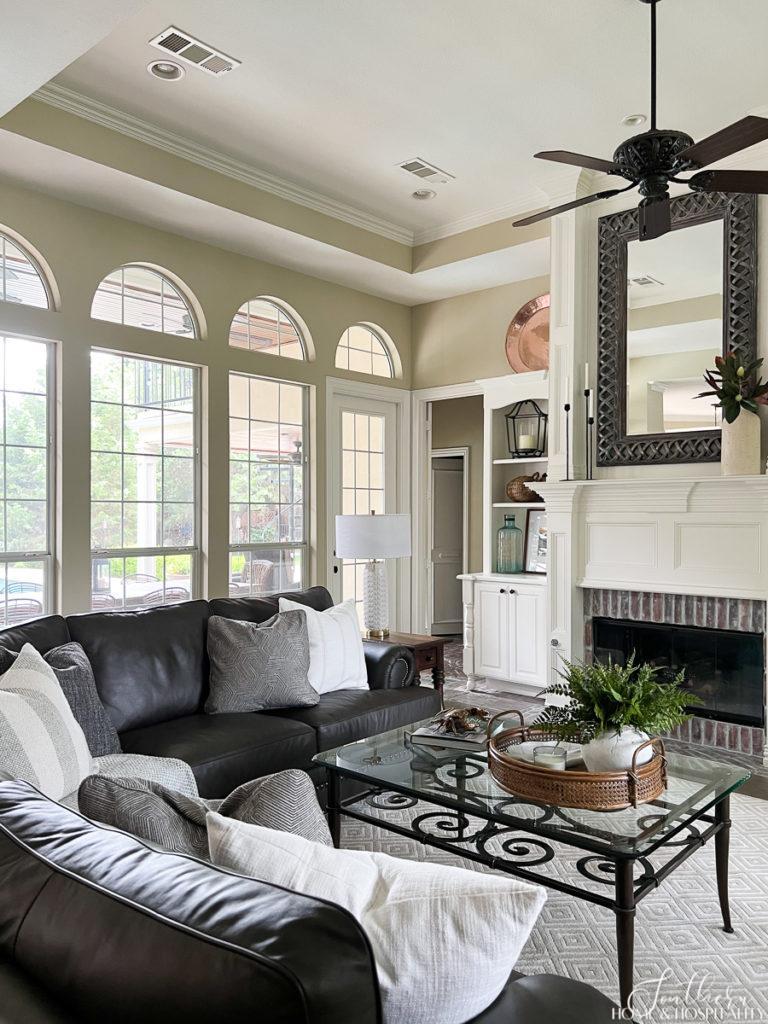
Let me start the explanation off by saying it’s not really important for us to distinguish between scale and proportion.
Our definition: It’s how the size of everything in your room relates to the space and how it relates to each other. How well they all fit together.
That’s all the definition you need, so feel free to skip ahead to the next section.
But if you’re the curious type, here are the technical definitions:
What is scale?
Scale refers to how the size of an object relates to the interior space or room. How well the pieces fit into the space. Scale can also refer to the relation of objects to the people using the space.
For example, an area rug should be scaled to both the room and to the space of the sitting area it’s anchoring.
What is proportion?
Proportion deals more with how objects in the room relate to each other. How the pieces fit together.
For example, a huge lamp on a tiny table – out of proportion.
How can I use scale and proportion in my room?
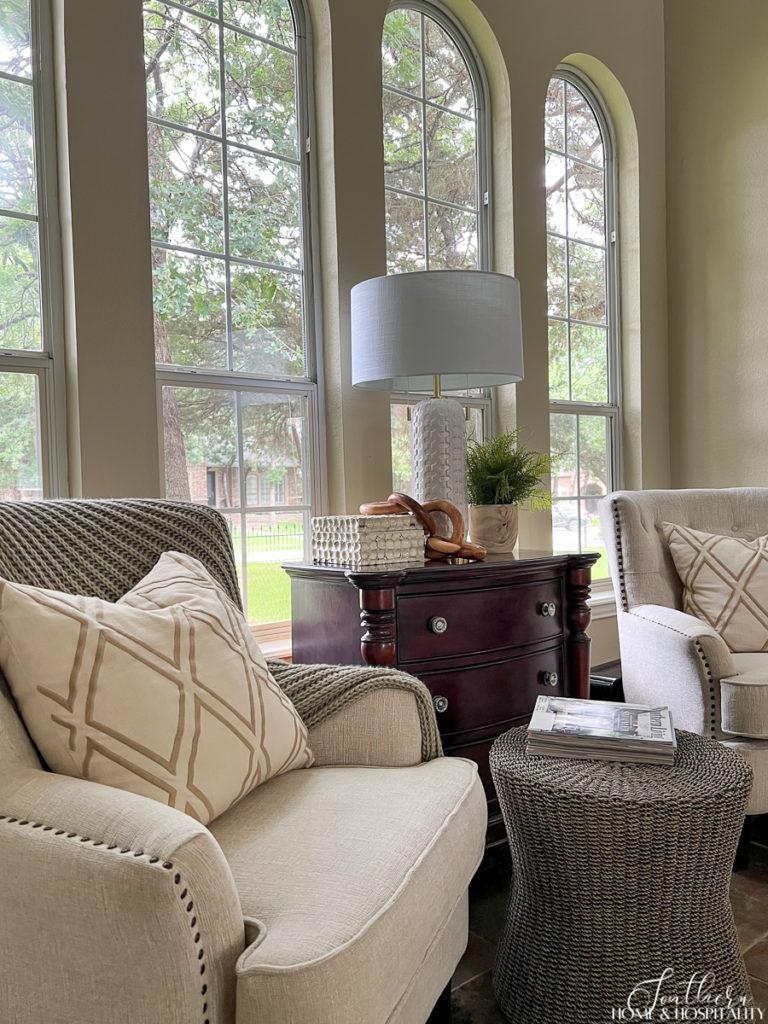
Now that you have a basic explanation, here are design tips to apply the magic of scale and proportion in your home:
Use the golden ratio.
Our definition: The “golden ratio” is 60/40.
By technical definition: The golden ratio is a mathematical ratio that is equal to 1.618.
It’s often found in things we find attractive in nature, architecture, art, design, and even faces. Things that are close to this ratio are naturally beautiful and pleasing to our eye.
The good news is, everyone has the innate ability to recognize this ratio! You only have to look at something and your brain tells you if it’s attractive. I’ve always said my best decorating tool is that I’m an “eyeballer“.
So how do you use the golden ratio?
Fill approximately 60 percent of a room with furniture, and leave 40 percent empty.
This is called white space or negative space. And it’s so important because it creates balance and allows the eye to rest. It allows us to appreciate and take in different things in the room without shutting out everything because our brain feels like the space is overly crowded or chaotic.
Resist the urge to fill every bit of floor and wall space!
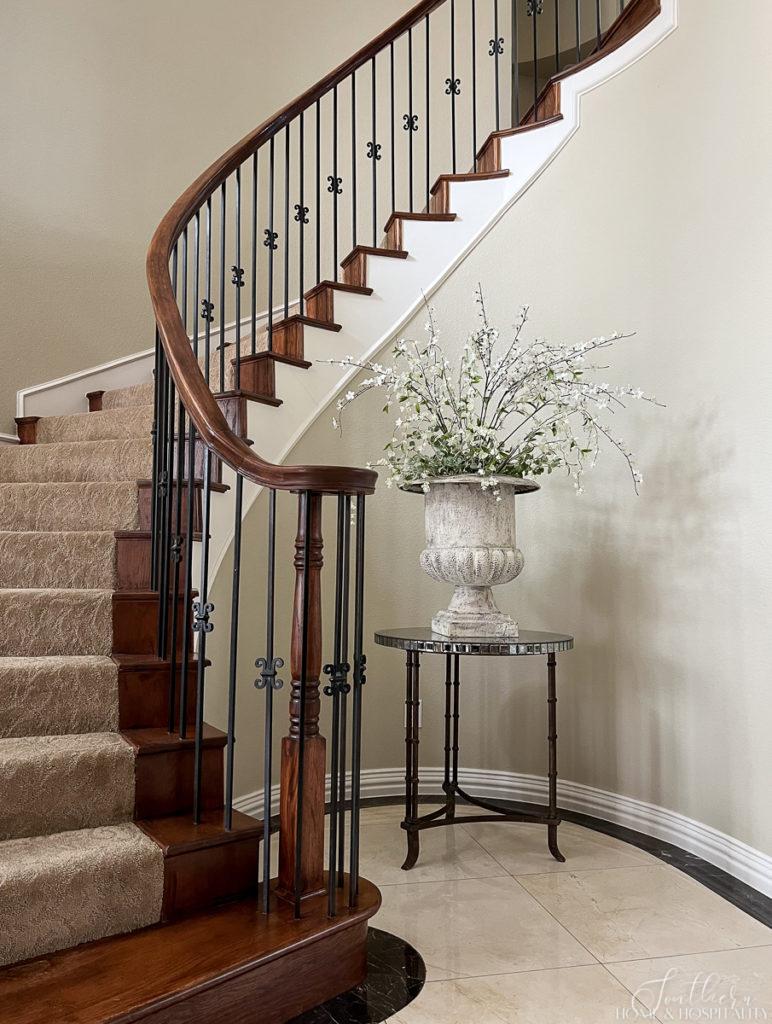
Scale the furniture to your room’s size.
This design principle is pretty common sense…
Take into account your ceiling height and size of the room. Large rooms and/or rooms with high ceilings should have larger furniture. And small spaces with lower ceilings should have items that are scaled down in size.
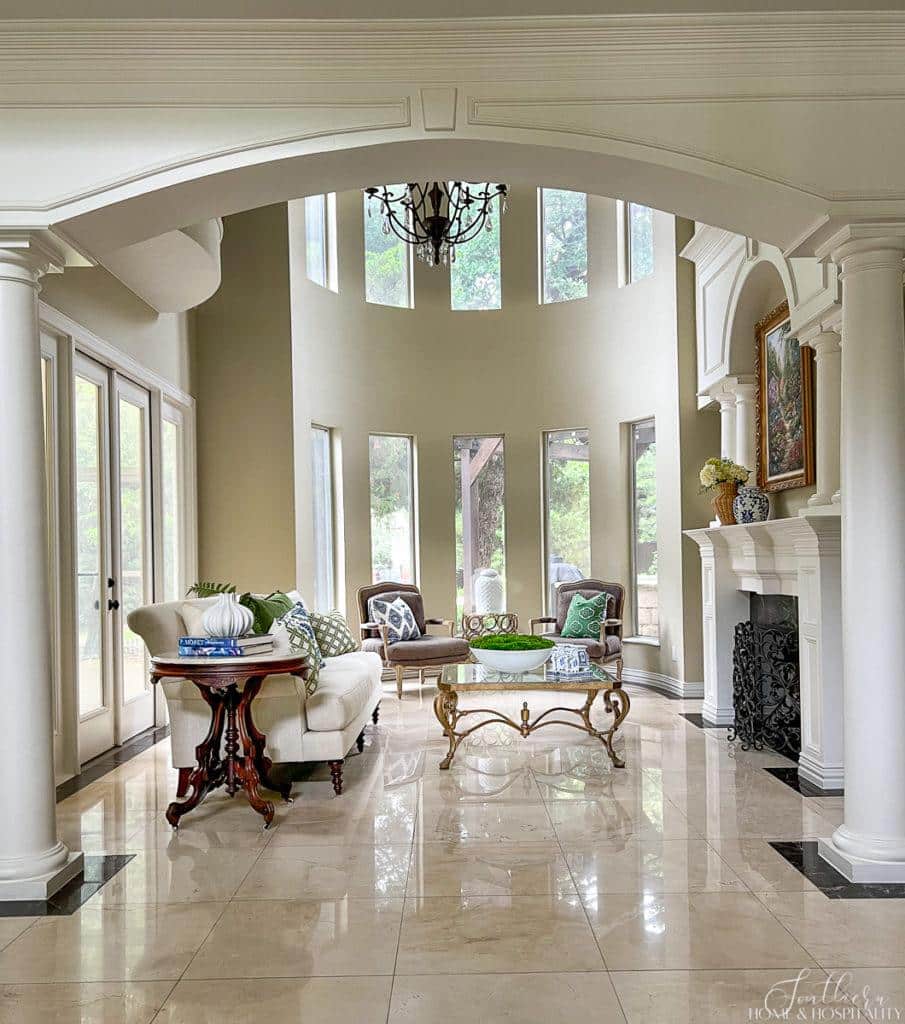
But never get so wrapped up in design “rules” that the common sense of how you use the room goes out the window. The room should always be functional for the most important “objects” in the room, the people!
So make sure the furniture is appropriately sized for the humans using them on a day-to-day basis. And the layout of the furnishings should never impede traffic flow. You may love that large sofa sectional with the recliners that seats twelve, but if you can’t walk around it in your living room, it’s a no-go.
Make sure all of the furniture lives in visual harmony.
It may be even more important that each piece of furniture be in proportion to each other than to the room.
For example, you can get away with large furniture in a smaller room (as long as it doesn’t take up more than 60 percent of the space) if it’s in proportion to each other. No gargantuan overstuffed sofa paired with a petite delicate side table will ever look right.
Have an important piece of furniture set the scale.
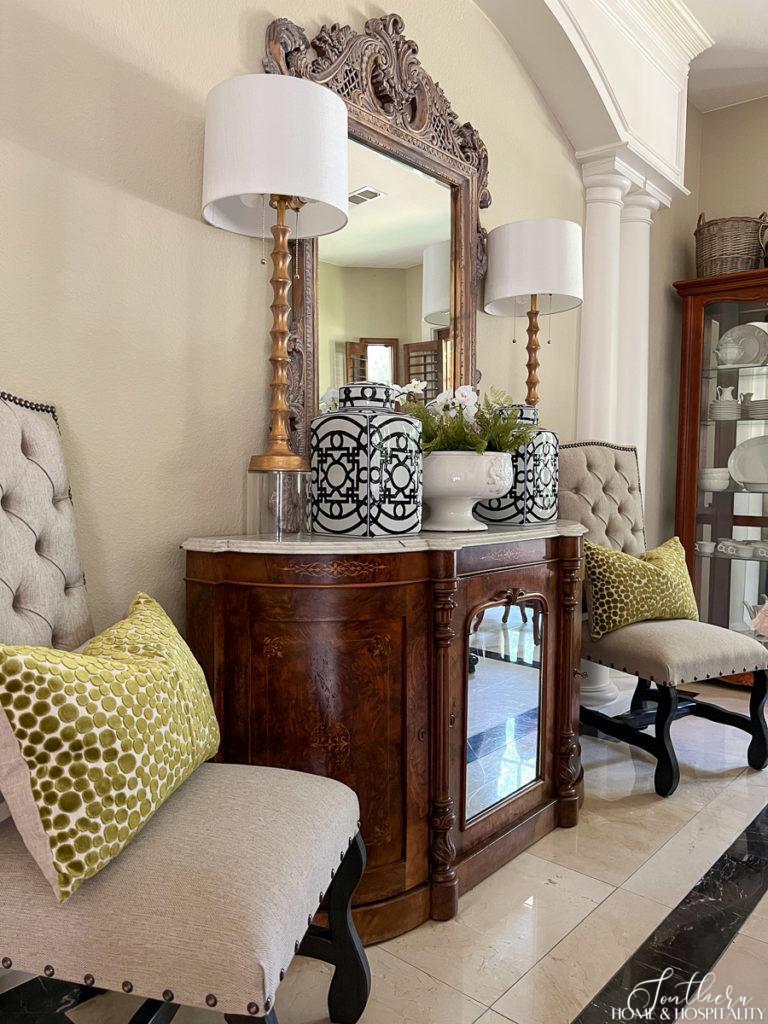
A lot of times we have a family heirloom or an expensive piece of furniture that we want to decorate around. You can start with the size of this special item and use it to guide the scale of the rest of the furniture in the room.
How do scale and proportion work for accessories?
Just like it’s a good idea to watch the scale for your health, it’s also a secret to an attractive room! However, it might be the opposite size you want to see on your bathroom scale.
Because when it comes to accessories…bigger is better!
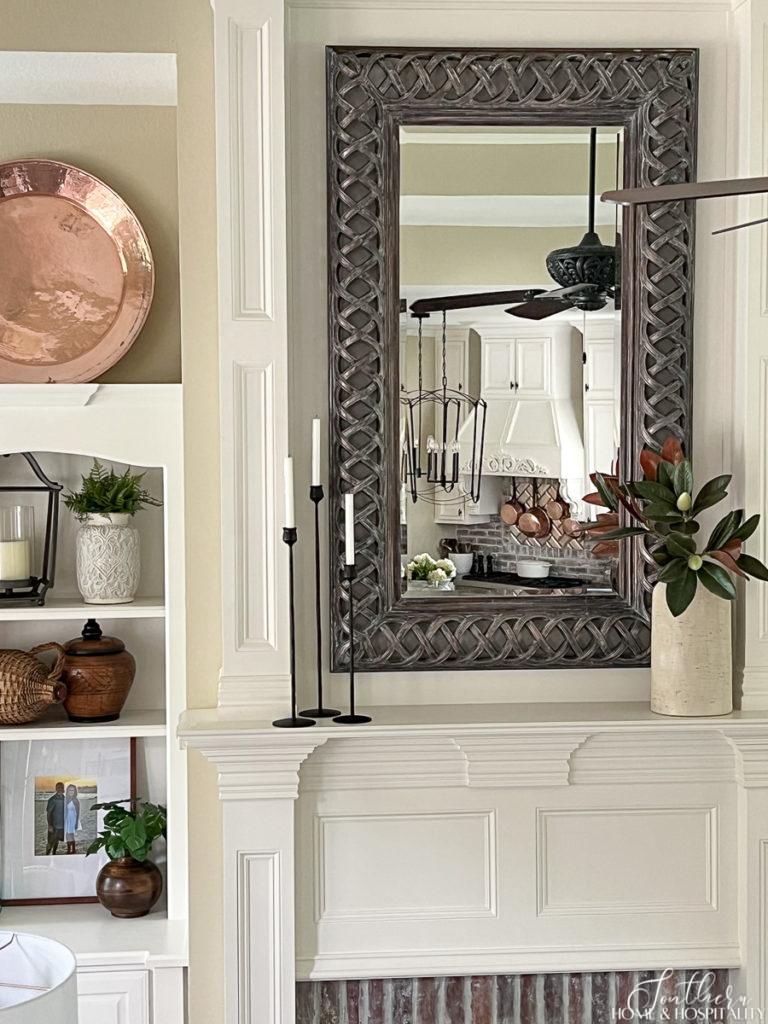
Of course, you want sizable accessories in a larger room. But in my opinion, large-scale accessories are almost always better than small-scale decor, in any size room.
While empty space makes a room more pleasing visually, so do larger and fewer items. Lots of smaller things register to the eye as clutter. Plus, large accessories give a room a more high-end and professionally decorated look!
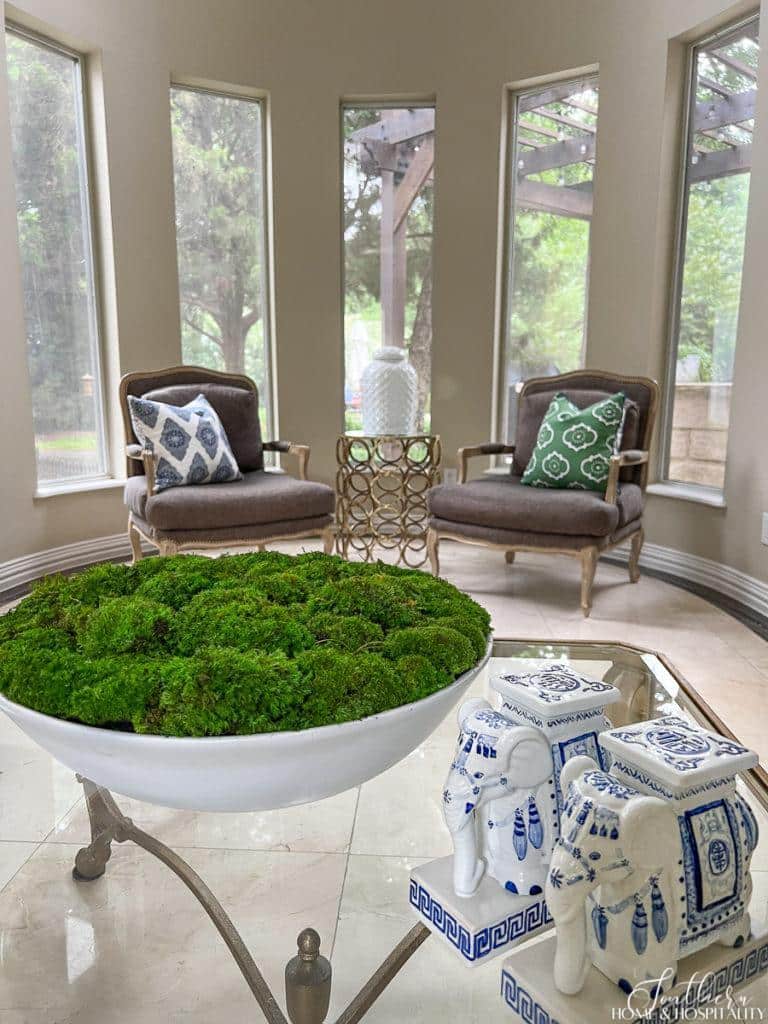
When you do have several small accessories, group items to give them more scale and weight by tying them together, like a vignette on a tray. This helps the eye to take them in as one object.
How do scale and proportion work on a wall?
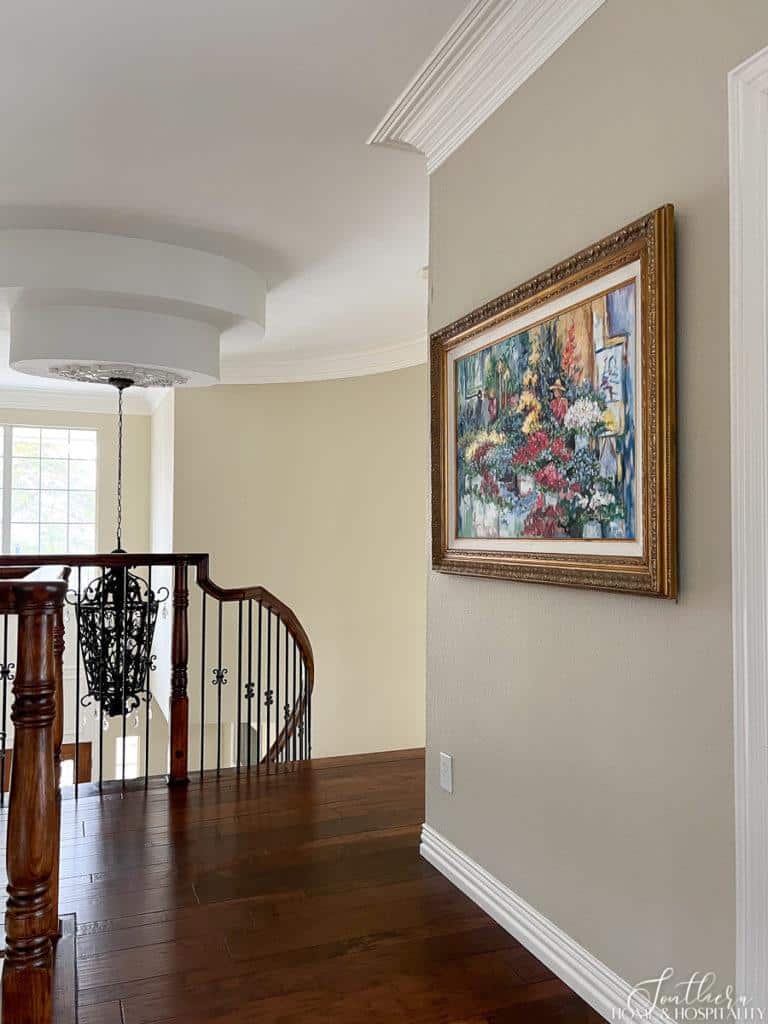
The size of artwork on a wall is so important and is so often done wrong. On a large wall, please, please don’t leave small pictures hanging out there on their own! You know when it doesn’t look right, as much as you wanted to hang that special piece there.
Larger prints or a gallery wall of smaller prints acting as one large piece of artwork are more attractive. And fill the wall space correctly.
The larger the artwork or gallery the more impact. Just have it relate to the furniture below it, typically about 2/3 of the width of what it’s hanging above.
See more about what size artwork should be and where to hang it.
When can I break the rule?
One of the tricks designers use for dramatic effect in a room is to upscale an item or pattern. Oversized items can add major impact.
How striking is a huge piece of artwork on a blank wall?
An oversized light fixture or a large bold patterned wallpaper is a great way to make a wow statement and can even make a small room feel bigger. So can a brightly patterned fabric on a pair of chairs or a sofa.
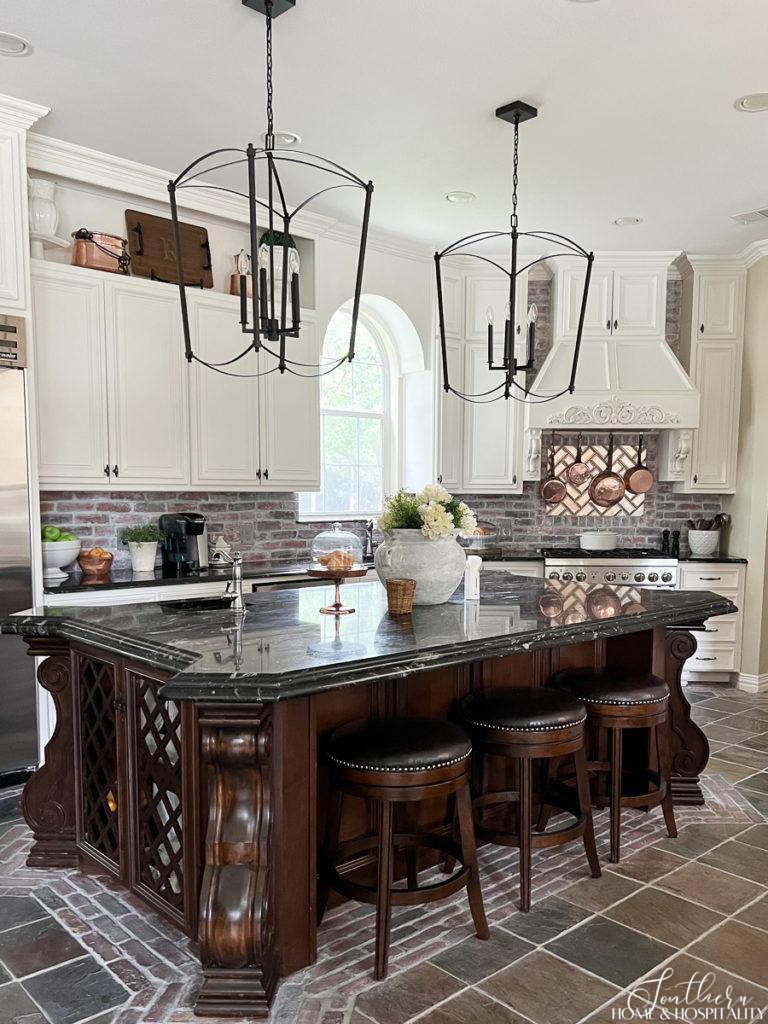
And remember to go with your gut when breaking the rules. It’s your home and at the end of the day, what’s in it is a matter of personal taste. As long as you like the way it looks, then it’s never “wrong”.
Following this general guideline for scale and proportion will help add that intangible “it” factor to your rooms. And unlike many other design elements, using scale and proportion correctly doesn’t cost anything extra.
It may even have people asking if you hired a designer.

Before you go:
As always, I appreciate your visit, comments, and shares here on the blog! I’d love it if you also follow along with me on Pinterest, Instagram, and Facebook so you won’t miss any of my inspiration and ideas.
Don’t forget to sign up for updates to keep in touch.
If you’re not already a member of the SH&H family, I’d love to have you join me! You’ll not only get email updates, but you’ll have exclusive access to all the bonus materials in my free subscriber-only library, like this:
Pin it to remember it!
If you’ve enjoyed this post, please pin and share this on Pinterest:
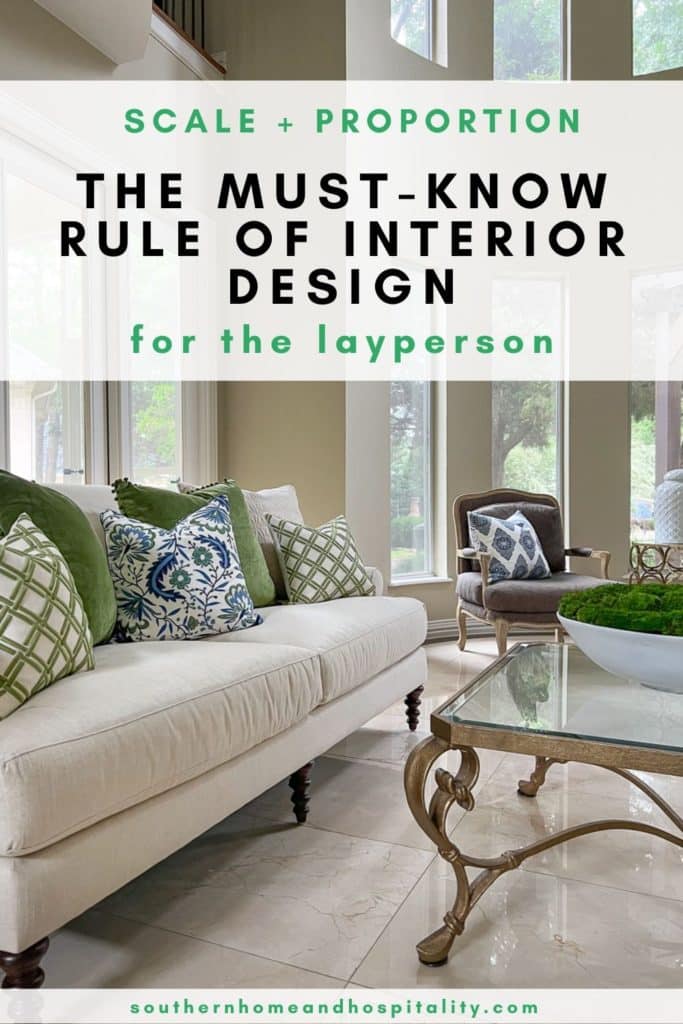



Just moved into new home n my first chance to start from scratch so any n all suggestions are greatly appreciated. I love with a passion country decor so I already have th things I need to decorate, just need advice on how to best put it together. And I thank you for all of th advice you are sharing. Thank you so much
Always interesting to get perspectives on interior design. I agree with a number of your statements, but then when I look at the island in the kitchen that is pretty massive. . .I’m a bit confused as to that rational. In my view, that island design is not only too massive, but doesn’t blend well with the surrounding cabinetry. However, if a client likes it. . .that’s all that counts.
Hi Arleen! The size of the island is all about utility here. Using the existing footprint of the original kitchen but opening it up to the family room, there was not much for counterspace along the wall, so it’s almost all on the island. And it’s really the highlight figure of the whole area!
Always such GREAT information from you!!!
Awww thank you Gloria, that’s always great to hear!😊
Your home is so beautiful…..I love going through the rooms.
Thank you so much Marlis – thanks for visiting!!
Such valuable info, Kate! Thanks for sharing! Have a great week!
Thank you Mary-Ann!